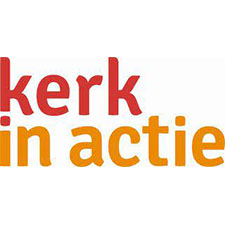RESILIENT LIVELIHOODS
- Teso sub region has for a long time suffered from food insecurity. Majority of the population from these regions largely depend on agriculture for their livelihood. The variant factors that have contributed to low crop yields over time have significantly affected these communities. The contributors to low crop yields include soil degradation arising out of poor farming methods and environmental degradation through deforestation and wetland utilization. The environmental degradation is worsening the effect of climate change which is further lowering crop yields. This strategic plan focuses on strengthening the communities to be resilient and food secure. To significantly address poverty in the Teso sub region, whose population is largely rural and dependent on Agriculture, investing in resilient livelihood interventions is necessary.
- Adaptation to better farming methods that will increase food production for both consumption and market is prerequisite. Access to markets to sell agricultural produce and improve household income will help to address poverty. The strategic plan will also focus on agro-processing (value addition) and diversification into non-agro based production. Under this programme area, COU-TEDDO will carry out the following strategic actions:
| Strategic Action | Description of Strategic Actions under Resilient Livelihoods theme |
| SA 1 | Build the capacity of communities to sustainably use and manage their natural resources |
| SA 2 | Mobilise and organize communities into income generating activities and diversion into non-agro-based production. |
| SA 3 | Promote and build capacity of households to use better farming methods to ensure food security. |
| SA 4 | Build the capacity of communities to be climate resilient. |
| SA 5 | Support small holder farmers on value addition and marketing of their products. |
| SA 6 | Promote access and use of clean energy sources and technologies among communities |
Key Results
2.1 Communities sustainably using and managing the natural resources
2.2 Communities mobilized into income generating activities
2.3 Communities adapt and use better farming methods
2.4 Communities are resilient and have adapted to effects of climate change
2.5 Small farmer groups add value to their produce and access market for their products
2.6 Communities sustainably access and utilise clean energy sources and technologies
Key Result 2.1: Communities sustainably using and managing the natural resources
Key Outputs
- Communities adopting appropriate agro-ecological approaches.
- Communities and duty bearers mobilized to promote Natural Resource Management
Key Result 2.2: Communities mobilized into income generating activities
Key Outputs
- Capacity of farmers strengthened to engage in farm and off-farm enterprises.
- Communities supported in Income Generating Activities.
- Communities mobilized into Village Savings and Loans Associations.
Key Result 2.3: Communities adapt and use better farming methods
Key Outputs
- Communities adapt appropriate agriculture technologies.
- Improved capacity of communities to use appropriate agro-ecological practices.
- Communities are food secure
- Communities have capacity to manage food production and utilisation.
Key Result 2.4: Communities are resilient and have adapted to effects of climate change
Key Outputs
- Communities are able to prepare and respond to climatic shocks.
Key Result 2.5: Small farmer groups add value to their produce and access market for their products
Key Outputs
- Farmers have capacity in post-harvest handling.
- Farmers add value to their produce and access markets for the produce.
- Farmers are organized into Cooperatives and Marketing Associations.
Key Result 2.6: Communities sustainably access and utilize clean energy sources and technologies
Key Outputs
- Communities have capacity to sustainably manage and use the available clean energy sources and technologies.
- Community-private sector linkages built and sustained.











